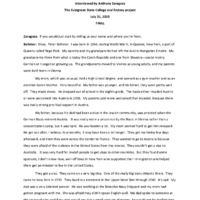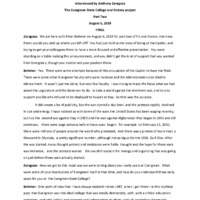Peter Bohmer Oral History Interview
Item
- Identifier
- Title
- Date
- Creator
- Contributor
-
BohmerPeter
-
Peter Bohmer Oral History Interview
-
July 31, 2019
-
August 16, 2019
-
Peter Bohmer
-
Anthony Zaragoza
Position: 921 (5 views)

